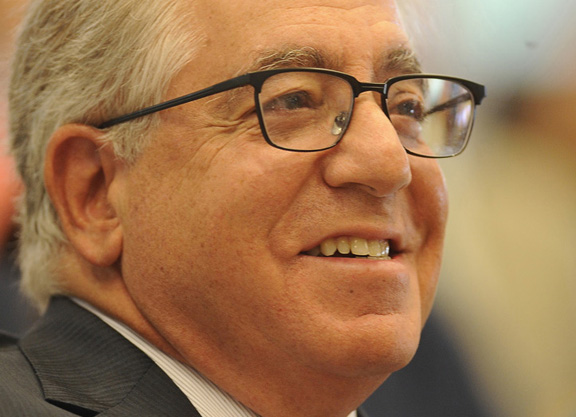By Jessica Martini
Trakus, the timing and tracking system introduced to the racing industry at Keeneland in 2006, will cease domestic operations Dec. 31, the company's chairman Barry Weisbord confirmed Wednesday.
“Trakus is closing its domestic operations on 12-31, the tracks have all been informed,” Weisbord said. “We have some international contracts and some of those are going to continue for a period of time, but not a significant amount of time.”
Several tracks which had been utilizing Trakus, including the New York Racing Association tracks, are expected to switch to the Equibase's lower-cost global positioning satellite system.
“It's winding down because it loses too much money,” Weisbord said of Trakus's end. “We lost a lot of money over a long period of time. We finally got to a break-even point and Equibase took some business away from us with their GPS system. We tried to get them to take a good look at our GPS system, but that didn't happen and they went with another company. It put us in a situation that it was untenable to operate.”
When it debuted 16 years ago, Trakus provided racing fans with, not only data which had been unavailable previously, but also graphics which allowed horse players to have a better vision of how races were being run.
“Trakus gave people sophisticated information–like actual feet covered–which many tracks put up on their simulcast shows and simulcast presenters talked about it,” Weisbord said. “It was talked about by fans in the big races–you get beat a head and you travelled 28 feet farther than the winner. People have come to understand those four lengths are meaningful. And we introduced that.”
Through its chicklets, which provided a real-time graphic for every horse in the field, Trakus also introduced a new way to watch racing.
“Having worked in broadcast television where we put up four numbers from a guy with binoculars, we always thought if you ever could have a full-field leader board that was right, that would be the be all and end all,” Weisbord said. “What the chicklets were able to deliver was clarity to that picture. The graphics can tell the story of the race and it doesn't matter how tight the director made the field or if he's scrolling through the field. No matter what he is showing, you know who is second or third in your multiple horse bet. They are showing Flightline drawing off, without the chicklets there, you have no idea who is second or third. That clarity to fans and bettors is critical to making racing more fun to watch. We had no idea how important that was going to be 16 years ago–we didn't know back then that people would be able to watch video on their phones.”
Looking to the future for the technology he helped launch in the industry nearly two decades ago, Weisbord said, “Now, my wish for the industry is that the companies that are continuing to operate continue to provide better data and continue to make better graphics. Because that is what the industry needs to compete with other sports and other forms of entertainment.”
Not a subscriber? Click here to sign up for the daily PDF or alerts.






